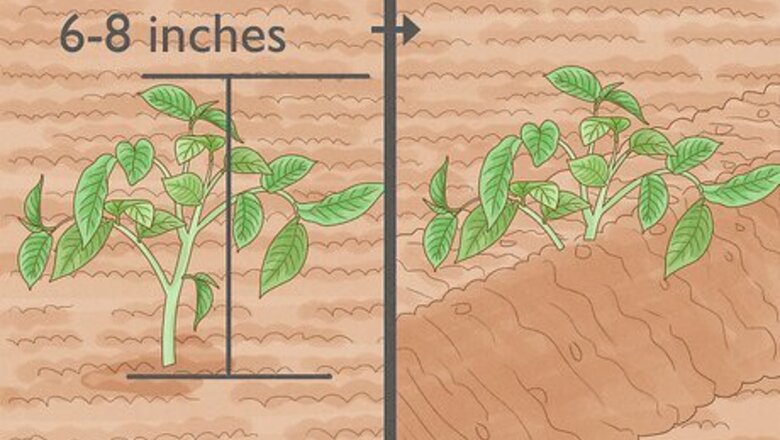
views
Hilling with Dirt
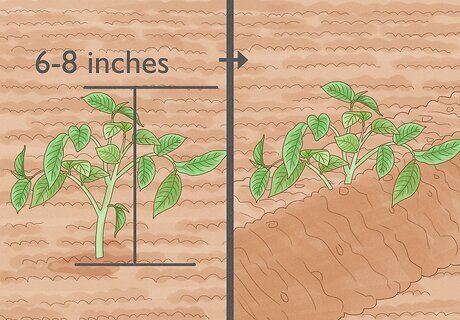
Hill the plants when they’re about 6-8 inches (15-20cm) high. The purpose of hilling is to cover potato tubers as they start to poke out of the ground. Several conditions can affect the growth of your potato plants, such as whether you’re planting during a wet or dry year. You may have to wait several weeks before it’s time to hill your potatoes.

Use a hoe to scoop dirt from between the rows. You shouldn’t need to scrape too deep, as you only need enough dirt to make mounds a few inches high. Start in the middle point between two rows of potato plants, and hoe the dirt towards one row first. You want the dirt to fill up around the plant as you do this.
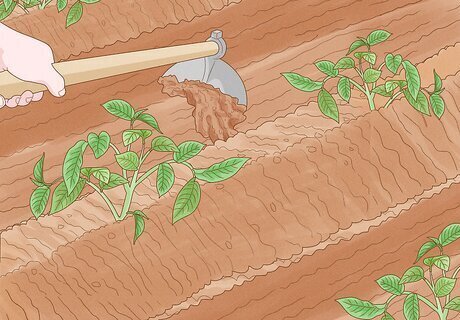
Keep going down the row, scooping dirt. Do this until all potato plants have a good mound of dirt around them, then repeat for the other rows. You want to make sure you bring dirt from either side of each row. If you don’t own a hoe, you can use a rake to pile the dirt by your plants. If you’ve planted your potatoes in a raised bed, you’ll need to add dirt to the bed in order to hill your potatoes. You can combine topsoil and compost and add it to the bed, making small mounds on each side of your potato plants.

Pack the dirt tightly with your hands. Using a hoe might not be quite enough to completely cover potato tubers peeking out of the ground. Use a good amount of pressure to pack the dirt until only the very top leaves of the plant are visible. Keep an eye out for any spots with exposed potatoes you may have missed with the hoe.
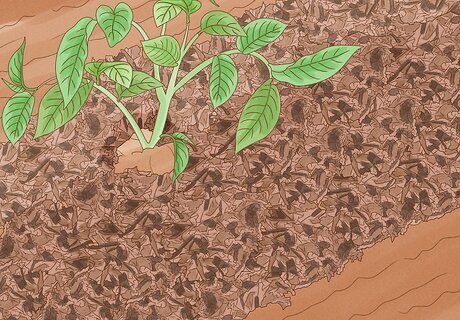
Add mulch. Topping your new soil with a thick layer of mulch will keep the soil cool and prevent weeds from sprouting. No specific type of mulch is needed here, but you’ll want to get enough to layer it thickly over the mounds of dirt around your plants.
Using Straw for a Second Hilling
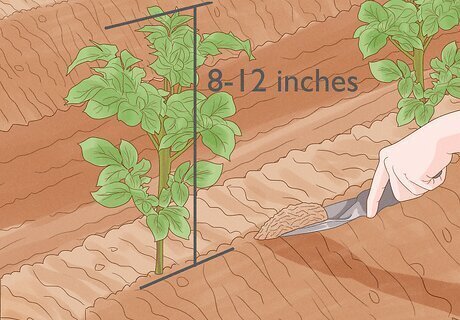
Wait a few weeks after the first hilling. After hilling your plants for the first time, the potato tubers will keep trying to grow their way to the top. You should wait until the potato plants should grow another 8-12 inches (20-31cm) before you consider hilling them again.
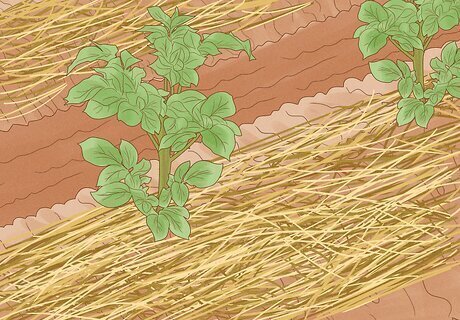
Work small handfuls of straw around the plants. Using straw for the second hilling will make the potatoes much easier to harvest; you won’t have to dig through more than a foot of dirt to find your potatoes. Using small handfuls at a time, fill the area around the plants with a thick bed of straw. You want the straw to be packed as tightly as possible, completely covering any exposed potatoes. If your potatoes are planted in a raised bed, you can add straw until you’ve filled the whole bed.
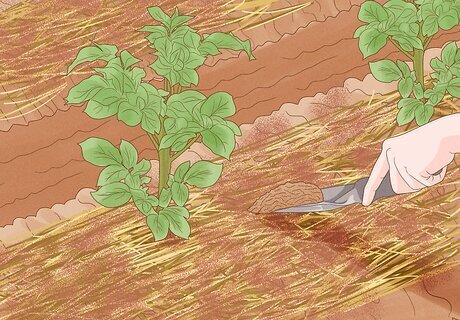
Sprinkle soil on the straw. Really any soil will do, all you’re looking to do is fill up any holes left by your straw bed. Don’t worry about trying to pack the dirt into the straw. As you sprinkle it on, the dirt will fill any open spaces. This will help protect the potatoes from the sun even more. After adding dirt, water the straw bed thoroughly.













Comments
0 comment